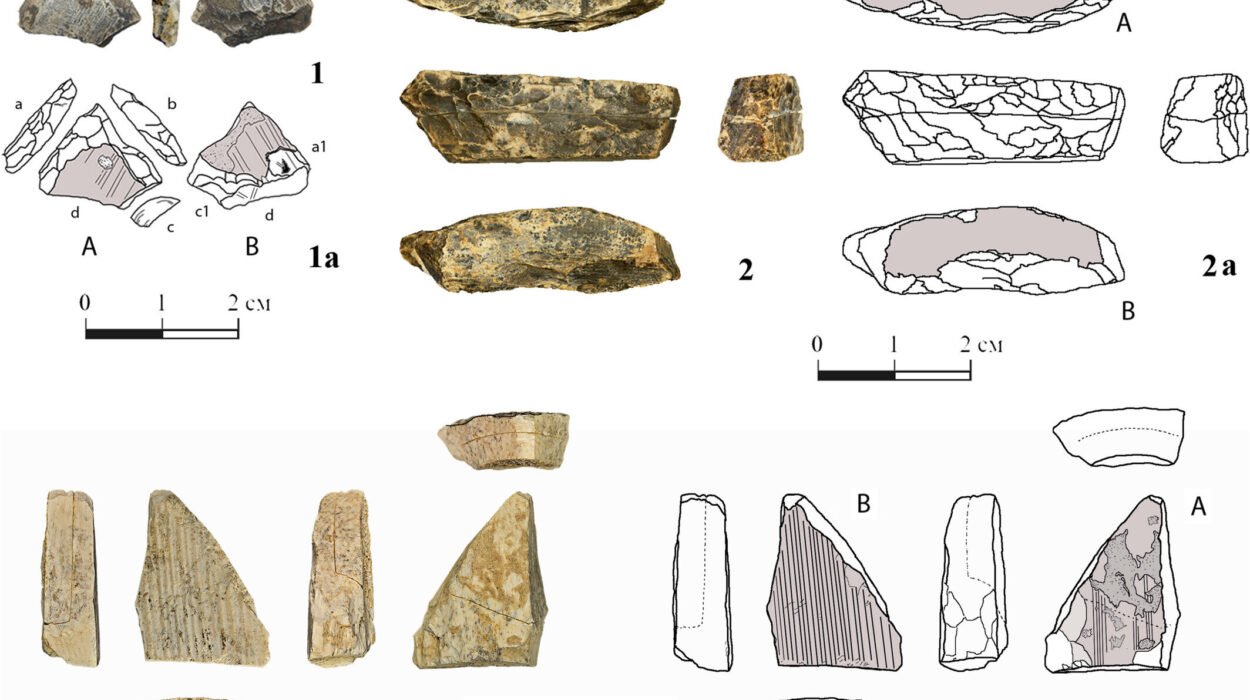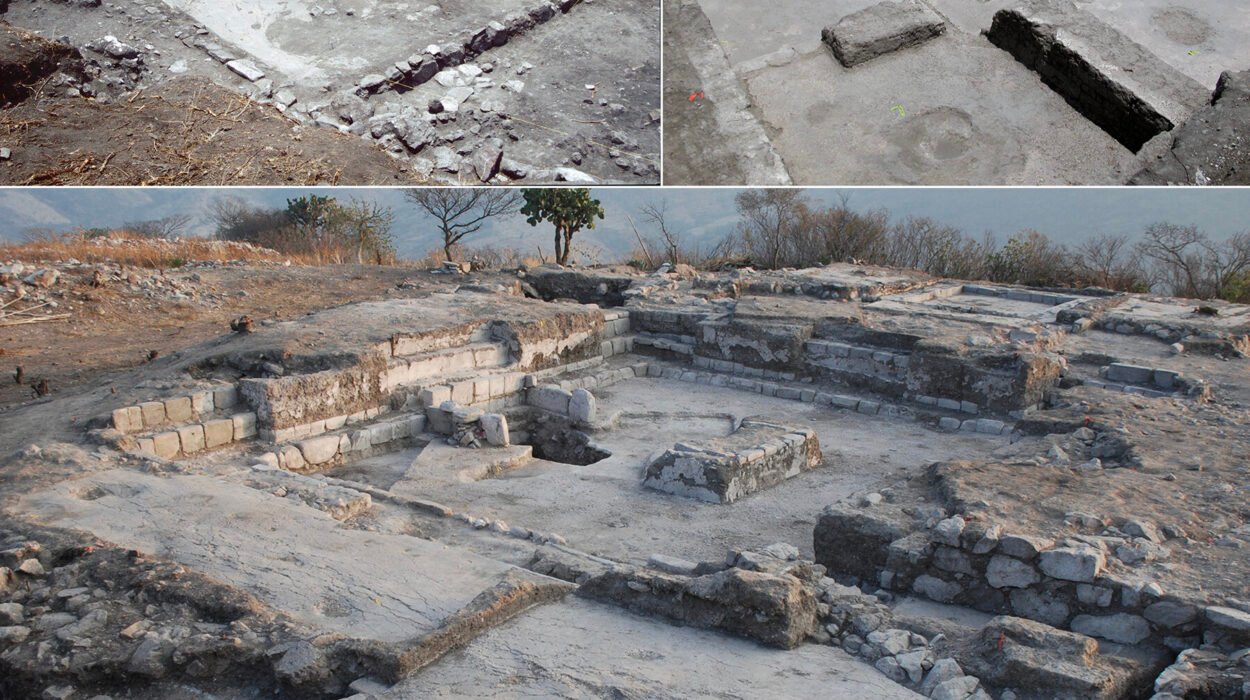For decades, the rhythm of early human history has echoed differently across continents. In Europe and Africa, the Middle Paleolithic period has been painted as a time of rapid innovation, diversity, and dynamism. Tools evolved, behaviors shifted, and the seeds of modern humanity took root. But across much of East Asia, the story has been more muted. Scholars long believed that, during this same stretch of prehistory, East Asia stood still—a quiet backdrop against the bustling stage of human evolution elsewhere.
That image is now cracking.
In the limestone highlands of southwest China, at a site called Longtan, archaeologists have unearthed a technological surprise buried in the sediment of time: an entire Quina lithic system. Previously known only from European sites and dating back more than 50,000 years, this sophisticated approach to toolmaking had never been seen in East Asia—until now. The discovery, published on March 31 in the Proceedings of the National Academy of Sciences, challenges one of archaeology’s most enduring assumptions and reopens a chapter of human history once thought closed.
At its heart, the Quina system is not simply about tools—it is about behavior, innovation, and identity. It speaks of people who shaped their world deliberately and skillfully, using tools that were tailored for specific, repeated tasks. Quina tools, particularly scrapers, are thick and often asymmetrical, their broad cutting edges scarred with the signs of persistent use and resharpening. These weren’t disposable flakes chipped off on a whim. They were durable, multi-use instruments, honed for real work—stripping hide, scraping wood, carving bone.
In Longtan, researchers discovered not just one or two of these scrapers, but an entire suite of them, nestled among the debris of their making. There were flakes and cores—the stone “blanks” from which tools were struck—and subtle microscopic traces of wear that whispered of ancient hands and ancient tasks. Under magnification, fine scratches and edge damage suggested that these tools were used much like their European counterparts: for shaping organic materials, likely in the preparation of food, clothing, or shelter. The resemblance was unmistakable.
What makes this finding seismic is not just the tools themselves, but where they were found. “This is a big upset to the way we think about that part of the world in that period of time,” said Ben Marwick, co-author of the study and professor of archaeology at the University of Washington. The prevailing wisdom has held that the Middle Paleolithic in East Asia was technologically conservative, even stagnant. Longtan suggests otherwise. It suggests movement, change, and perhaps even contact between human groups separated by thousands of kilometers.
The Quina system, first recognized in southwestern France, has long been associated with Neanderthals. It was part of a broader Mousterian technological tradition, one that spanned Europe and parts of Western Asia. Its presence in China, dated to between 50,000 and 60,000 years ago, is therefore provocative. It suggests that either people—or ideas—moved far more widely than previously believed.
That’s the central question now facing archaeologists: How did this sophisticated toolkit end up so far from its supposed birthplace? Was it carried by migrating groups, slowly diffusing from west to east over generations? Or did different populations—possibly Denisovans or Homo sapiens—stumble upon the same innovation independently?
It’s a mystery wrapped in stone. If this technology evolved locally in China, it would imply a previously unrecognized capacity for innovation in East Asian hominins during the Middle Paleolithic. But if it arrived via transmission from western populations, it would point to a network of movement and exchange that cuts across vast prehistoric landscapes.
Marwick and his colleagues are now on the hunt for deeper layers of insight—literally. They hope to find sites with stratigraphic depth, where earlier toolkits might reveal a slow evolutionary path toward Quina-like tools. Such findings would suggest that local experimentation gradually led to this technological outcome. But if Quina appears abruptly, without a developmental trail, it could be the fingerprint of migration or contact.
This discovery also reopens the debate over which hominin species inhabited this part of the world during that window of time. No Neanderthal remains have ever been found in East Asia, but Denisovans—a mysterious cousin species known mostly from fragments and DNA—are a strong contender. The Denisovan genome, pieced together from a finger bone and a few teeth in Siberia’s Denisova Cave, has already surprised scientists with its complexity. It revealed a distinct lineage that interbred with modern humans and left a lasting legacy, especially in Southeast Asia and Oceania.
If the Longtan tools were made by Denisovans, it would expand their behavioral repertoire dramatically. Until now, little was known about their technology. The Quina tools could represent one of the first clear glimpses into their cognitive world—how they adapted to their environment, how they planned, and how they solved practical problems. It could also suggest that Denisovans, like modern humans and Neanderthals, had their own trajectories of technological innovation.
Alternatively, the tools might be the handiwork of early Homo sapiens. Genetic evidence shows that anatomically modern humans were present in East Asia by at least 80,000 years ago, though the archaeological record is thin. If modern humans were behind the Longtan tools, it would further complicate the picture, showing that they were not simply passive residents of the region but active participants in shaping their technological landscape.
The discovery is as much a triumph of method as it is of luck. Marwick points out that archaeological work in China has grown more sophisticated in recent years, aided by increased collaboration with international researchers and more familiarity with foreign lithic traditions. “Archaeologists working in China are learning more about archaeology in other parts of the world and how to recognize their findings,” he said. That cross-pollination of knowledge is vital. Without it, the Longtan tools might have been misidentified or overlooked entirely.
And there is more to come. The pace of archaeological research in East Asia is accelerating, driven by new funding, improved techniques, and a growing recognition that this region holds untapped historical treasure. As scientists look more carefully, they are likely to find more sites like Longtan—sites that challenge assumptions and redraw the map of early human evolution.
There’s also a psychological shift underway. For too long, the idea that East Asia was technologically static during the Paleolithic has gone unquestioned. It became a kind of background noise, an assumption baked into interpretations and textbooks. The Longtan discovery interrupts that narrative. It invites scholars to ask new questions, to revisit old data with fresh eyes, and to open their minds to the idea that innovation was not the sole domain of Europe and Africa.
Yet many pieces of the puzzle remain missing. Most tantalizingly, there are no human remains yet linked to the Longtan tools. “That could answer the question of whether these tools are the product of a modern human like you and me,” Marwick said. Without skeletal evidence, the makers of the Quina tools in China remain anonymous. They are a shadowy presence in prehistory—skilled, resourceful, but unnamed.
If bones or teeth are eventually found at Longtan, they could provide the breakthrough. A Denisovan jaw. A modern human skull. Or perhaps something entirely unexpected—a new species, a hybrid, a lineage we’ve never seen before. Prehistory is full of surprises, and each excavation is a wager against the silence of time.
What Longtan offers is not just a new site or a new set of tools. It offers a new way of thinking. It reminds us that the past is not fixed but fluid, open to reinterpretation with each fresh find. It tells us that ancient people, no matter where they lived, were capable of intelligence, creativity, and adaptation. They weren’t static. And their stories aren’t over. We just haven’t uncovered all the chapters yet.
More information: Qi-Jun Ruan et al, Quina lithic technology indicates diverse Late Pleistocene human dynamics in East Asia, Proceedings of the National Academy of Sciences (2025). DOI: 10.1073/pnas.2418029122






